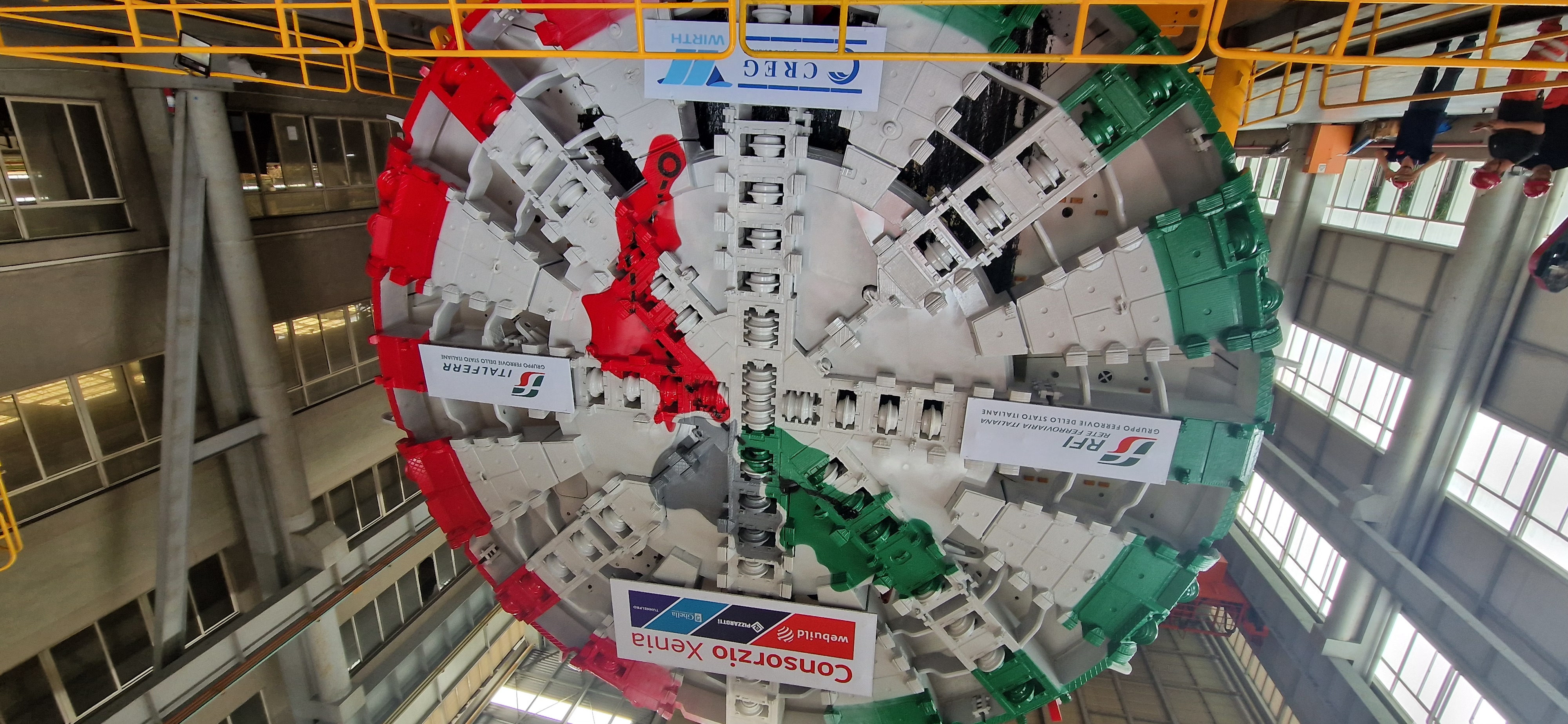TBM arrives in Salerno for the first section of the Salerno-Reggio Calabria High-Speed Railway Line
09-30-2024
With a cutting head diameter of over 13 meters, the TBM that has arrived in Salerno is equipped with 18 motors generating 10 Megawatts of power and will operate 24/7, seven days a week.
After its arrival by ship in Salerno, the TBM will be transported to the site where assembly activities, expected to last between two to three months, will take place. The machine will then be used to excavate 3 kilometers of the Saginara tunnel, located between the municipalities of Campagna and Contursi Terme (SA), working continuously, 24 hours a day, seven days a week. Over 100 highly specialized personnel will be employed to operate and maintain the machine.
Measuring approximately 130 meters in length and weighing around 4,000 tons, the TBM now in Salerno is powered by 18 motors producing a total of 10 Megawatts of power. Its cutting head has a diameter of 13.46 meters. After today's arrival of the first machine, the remaining three TBMs will follow in the coming months, marking the commencement of intensive construction work on the railway line, which is funded by the National Recovery and Resilience Plan (PNRR).
The works on section 1A, awarded to the Xenia Consortium, which includes Ghella, Tunnel Pro, Webuild (leader), and Pizzarotti, are a critical component of the broader project to construct the new Salerno-Reggio Calabria high-speed railway. This section involves the detailed design and construction of 35 kilometers of new railway between the cities of Battipaglia and Romagnano, where trains will travel at speeds of up to 300 kilometers per hour. The project encompasses the construction of 20 tunnels (8 of which will be excavated using four TBMs), 19 viaducts, and a junction in Romagnano to connect the new line with the existing railway running from Battipaglia towards Metaponto and Potenza.
The 1A section of the new Salerno-Reggio Calabria high-speed line is one of the country's strategic projects for sustainable mobility, supporting the broader energy transition. It will contribute to uniting the North and South of Italy, driving regional development and growth, and enhancing Italy's competitiveness by strengthening its connectivity with the rest of Europe.


